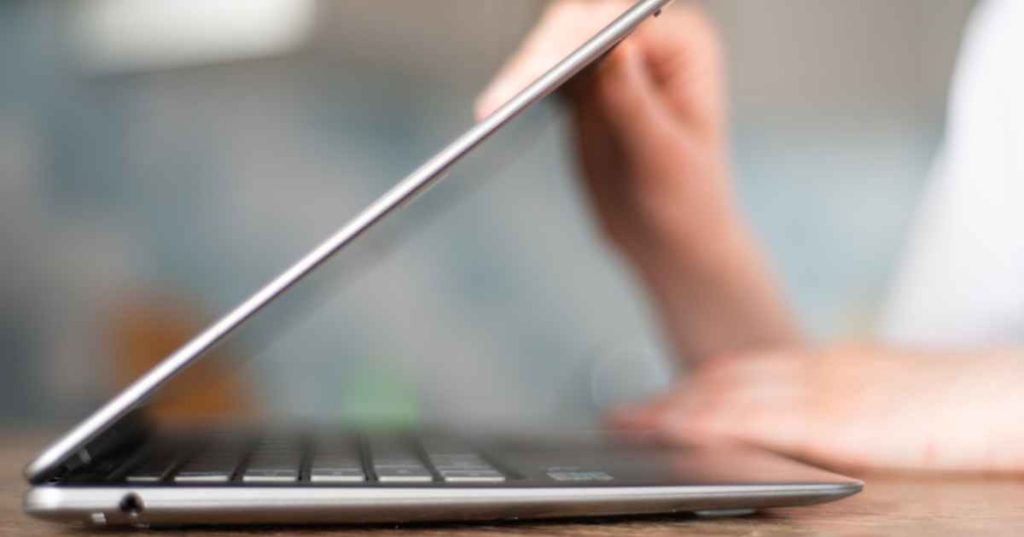Shut Down or Sleep: Which Option Should You Choose for Your Laptop?

Imagine you’re stepping away from your laptop for a break — maybe to grab a coffee or attend a quick meeting. Or maybe you’re done using your laptop for the day, and there will be an extended period of inactivity. You’re faced with a choice: shut down completely for a fresh restart later, which can be slow if you have lots of apps open, or simply put it to sleep, keeping everything as is but using a bit of battery power and perhaps leaving your data exposed.
Shutting down your laptop means it’s completely off, not using any power, and all your programs are closed. On the flip side, putting your laptop to sleep shifts it into a low-power state where all your open files and programs are kept alive in memory, ready to spring back to action instantly.
Let’s examine the pros and cons of each option to help you make the best choice for your laptop’s health and productivity.
Shut Down vs. Sleep: Technical Processes and Effects
Choosing between shutting down your laptop and putting it to sleep impacts both convenience and energy consumption. Shutting down completely powers off the device, conserves energy, and secures your data but requires more time to restart. Sleep mode, on the other hand, preserves your session in RAM for quick resumption, which is one consideration in how to make the laptop faster, though it still consumes a small amount of power. Understanding the advantages and disadvantages of each can help you optimize your laptop’s performance and longevity based on your specific needs.
Shut Down Technical Process:
- Power Off: When you shut down a laptop, it completely powers off. The operating system sends signals to all hardware components and drivers to safely turn off.
- Closing Programs: All open programs and documents are closed, and any unsaved work is lost unless saved manually.
- No Power Usage: Once shut down, the laptop uses almost no power, as all components are turned off.
Shut Down Effects on Hardware and Software:
- Hardware: Shutting down helps protect the hardware by ensuring that all components are safely powered off, which can extend the laptop’s overall lifespan.
- Software: The operating system and all running applications are closed. The next time the laptop is turned on, it will go through the full boot-up process, initializing hardware and loading startup programs, which can take a few seconds to a few minutes — depending on the system.
Sleep Technical Process:
- Low-Power State: When the laptop is in sleep mode, it enters a low-power state. The operating system’s current state, including all open programs and documents, is saved in the RAM.
- Partial Shutdown: Most components, such as the CPU and hard drive, are powered down, but the RAM remains powered to retain the current session.
- Quick Resume: When the laptop is woken up from sleep, it quickly resumes from where it left off, as the state is retained in the RAM.
Sleep Effects on Hardware and Software:
- Hardware: Sleep mode uses a small amount of power to keep the RAM active. If the laptop is not plugged in, this can lead to a gradual battery drain. However, it allows for a quick resume, which is convenient for short breaks.
- Software: The operating system and all running applications remain in their current state. This means you can quickly pick up where you left off without going through the full boot-up process. However, if the battery runs out while in sleep mode, any unsaved work may be lost.

Benefits and Drawbacks of Shut Down vs. Sleep
By understanding the benefits and drawbacks, users can make more informed decisions about whether to shut down or put their laptops to sleep based on their specific needs and usage scenarios.
Shut Down Advantages:
- Energy Conservation: Uses no power once the laptop is completely turned off, making it the most energy-efficient option.
- Component Longevity: Reduces wear and tear on components, as they are not running continuously. If you’re asking why is my laptop fan so loud, this could be part of the answer. This can extend the lifespan of the hardware.
- Fresh Start: Provides a fresh start for the operating system, which can help resolve minor software issues and clear out temporary files and RAM.
- Security: This option offers better security, as the system is completely powered off and requires a password to access it upon restart.
- Maintenance: Allows the system to perform self-tests and apply updates correctly, which can be beneficial for system maintenance.
Shut Down Disadvantages:
- Start-Up Time: Requires a full boot-up process, which can take longer compared to waking from sleep mode.
- Inconvenience: All open programs and documents must be closed, and you need to reopen them upon restart, which can be time-consuming.
- Potential Data Loss: If you forget to save your work before shutting down, you may lose unsaved data.
Sleep Advantages:
- Quick Resume: Allows for a fast resumption of work, as the current state of the system is saved in RAM, enabling you to pick up where you left off almost instantly.
- Convenience: This is ideal for short breaks, as it keeps all open programs and documents in their current state without needing to close and reopen them.
- Battery Life: Uses less power than being fully active, which can help conserve battery life during short periods of inactivity.
Sleep Disadvantages:
- Power Consumption: It still consumes a small amount of power to keep the RAM active, which can drain the battery if the laptop is not plugged in.
- Component Wear: Generates heat and keeps some components active, which can lead to a shorter lifespan for those components if used excessively.
- Security Risks: If left unattended in a public or unsecured area, the system is more vulnerable to unauthorized access.
- Potential Data Loss: If the battery runs out while in sleep mode, any unsaved work may be lost, as data in RAM is not saved to the hard drive.
Tailored Advice: Shut Down vs. Sleep for Different User Needs
By considering these tailored scenarios, users can make more informed decisions about whether to shut down or put their laptops to sleep based on their specific needs and usage patterns.
1. Users Prioritizing Device Longevity
Scenario: You have a high-end laptop that you want to last as long as possible, such as a gaming machine or a professional workstation.
Advice:
- Shut Down: Regularly shutting down your computer can help extend the lifespan of your hardware by reducing wear and tear on components like the cooling fan and hard disk. It also helps in detecting any hardware issues early, especially if the device is new and under warranty.
- Sleep: Use sleep mode sparingly, primarily for short breaks. While sleep mode is convenient, it keeps some components active, which can generate heat and potentially shorten their lifespan over time.
2. Users Needing Quick Access
Scenario: You are a professional who needs to quickly resume work, such as a content creator or a business executive who frequently steps away from their computer.
Advice:
- Shut Down: Shut down your computer only when you know you won’t need it for an extended period, such as overnight or over the weekend. This ensures a fresh start and can help with system performance.
- Sleep: Sleep mode is ideal for short breaks, like lunch or meetings, as it allows you to quickly resume your work without waiting for a full boot-up process. This is especially useful if you have multiple applications and documents open.
3. Users Concerned with Energy Efficiency
Scenario: You are an environmentally conscious electronics user or a business looking to reduce energy consumption and save on electricity bills.
Advice:
- Shut Down: Shutting down your computer when not in use, especially overnight or during long periods of inactivity, can reduce energy consumption.
- Sleep: Use sleep mode for short breaks to save energy while still being able to resume work quickly. However, be mindful that sleep mode still consumes a small amount of power, so it’s not as energy-efficient as a full shutdown.
4. Gamers
Scenario: You are a gamer who needs optimal performance and quick access to your gaming setup.
Advice:
- Shut Down: Regularly shutting down your gaming laptop can help maintain optimal performance by clearing out temporary files and ensuring a fresh start. This can be particularly beneficial after long gaming sessions to prevent overheating and wear on components.
- Sleep: Use sleep mode for short breaks between gaming sessions to quickly resume your game without having to reload everything. However, avoid leaving your laptop in sleep mode for extended periods to prevent potential overheating and battery drain.
5. Remote Workers and Frequent Travelers
Scenario: You are among the millions of remote workers or are a frequent traveler who needs to access your laptop remotely or transport it often.
Advice:
- Shut Down: Shut down your laptop when traveling or when you won’t need it for an extended period. This helps protect the device during transport and conserves battery life.
- Sleep: Use sleep mode if you need to quickly access your computer remotely or if you are stepping away for a short period. This allows you to resume your work quickly without going through the full boot-up process.

Final Thoughts: Shut Down or Sleep Mode for Your Laptop?
To decide whether to shut down or use sleep mode for your laptop, consider these key aspects: the duration you’ll be away from your laptop, whether quick access or power conservation is your priority, and the frequency of your usage. For short breaks, sleep mode offers convenience, while shutting down is preferable for longer periods to save power and enhance security. This guidance can help you optimize both the performance and longevity of your laptop based on your personal or professional needs.
